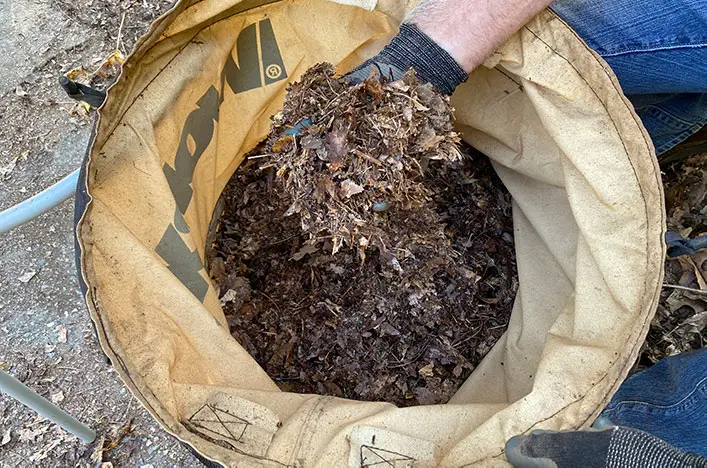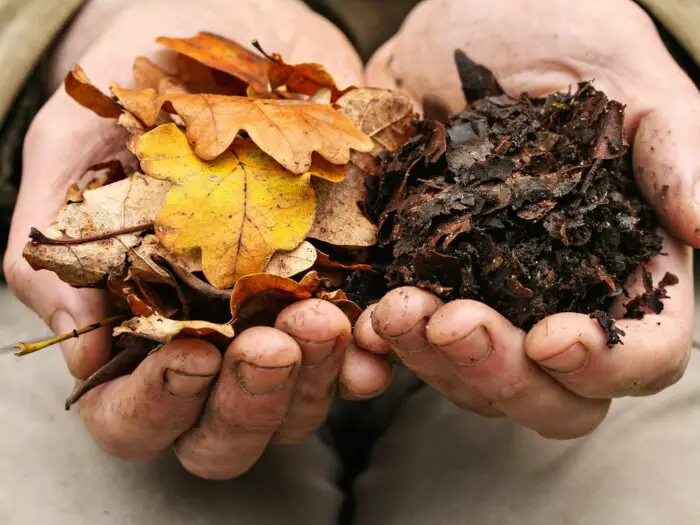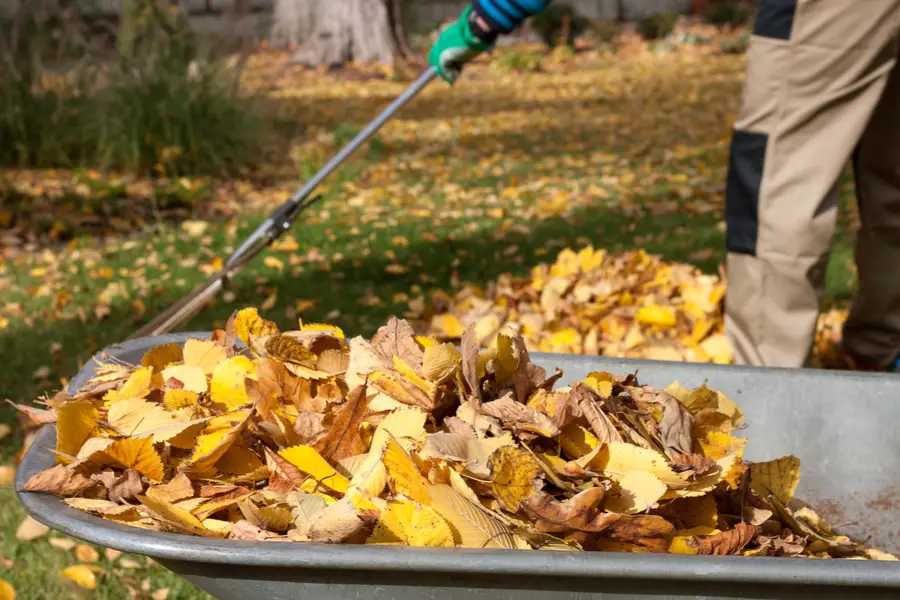Instead of seeing the fallen leaves on the ground as an annoyance, rake them up, repurpose them, and enrich your flower or vegetable garden. Take your gardening skills to the next level by learning how to make your own mulch with shredded leaves.
Not only is this cost-efficient, but it’s also incredibly healthy for your soil. What’s even better is that this mulch is easy and cheap to make. It just requires some patience.
If you have ever wondered, “what can I do with shredded leaves?”, you’ll find a brilliant answer here.
8 Benefits of Using Shredded Leaves to Make Mulch
I would say that the only downside to using this method is the work and time it takes. Other than that, everything is a benefit.
For example:
- A pile of leaves holds about 5 times their weight in water, providing great water retention
- Shredded leaves help to cool the roots of a plant in extreme heat, as well as insulate in cold climates
- While it won’t fix wonky pH levels, it will help to moderate pH
- It stops the growth of weeds near the roots
- Prevents soil erosion
- Using the leaves in this way keeps your drains clean
- Organic
- Free
How Do You Turn Dry Leaves Into Mulch?
The process of composting leaves is quite simple, even more so if you have composted before. Collect a mixture of different whole leaves for your compost pile and decide how you will shred them.
You need to decide how and where you are going to store them. If you get creative, there are a few options and even more. You can keep them in a black trash bag for garbage cans or a compost bin with holes poked in.

Or, more traditionally, you can store them in a wooden or wire enclosure and cover it with a tarp to keep the moisture in.
From here, it’s a waiting and a watering game. Check on the shredded leaves every 3-4 months. You want to ensure they stay moist. While checking or watering your compost, use an instrument to stir the leaves around, providing fresh oxygen.
When the shredded leaves turn crumbly and soft, they are ready to be used in your garden. In some cases, this can be achieved within six months to one year.
What Do You Add to Leaf Mulch?
To make your leaf mulch or leaf mold, as some people call it, as healthy as possible, there are a few things you can add to it during the composting process.

If you use old leaves, you’ll want to add in some fresh nitrogen, which can be done with fresh grass clippings. You can also add in fruit and vegetable scraps. Finally, you can add an inch or so of rich garden soil to your leaf mulch.
What Is the Fastest Way to Mulch Leaves?
Well, cutting or shredding the leaves as small as possible will allow the composting process to happen faster.
You can cut them up by:
- Using a lawnmower
- Using a weed wacker or trimmer
- Using a leaf shredder/chipper
- Using a leaf vacuum
- Raking leaves
- Driving over them
- Using other creative methods such as jumping on them or enlisting the help of chickens
Keep the process on track by making sure the mixture is moist and by aerating it every few months. If you fall behind on one of these tasks, or if the leaves are not shredded finely, this entire process will take even longer.
Using the right leaves will also speed up this process. Some of the ideal shredded leaves to use include: oak, lime, birch, cherry, ash, and elm. These leaves are full of nutrients and break down quickly.
What Else Can I Do With Shredded Leaves?
Aside from making leaf mulch, you can use the shredded leaves for a couple of other projects.
You can enrich your food compost with shredded leaves. They actually speed up the process and absorb bad odors.
If you live in a cold climate, you might also consider using the leaves as insulation around your plants in the winter.
Finally, you can mix the leaves directly into your soil to make it richer.
What Leaves Should Not Be Composted?
Having a blend of different leaves is great, as they all bring different nutrients to your mulch. However, there are a few you want to avoid.
Always do your best to avoid diseased leaves. The disease on the leaves could continue to grow and possibly spread to the plants that you put the organic matter and mulch around. Secondly, eucalyptus leaves contain a natural herbicide that interferes with sprouting seeds.
Others that aren’t terrible but do take a long time to decompose include holly, sycamore, maple, and magnolia leaves.
These are high in cellulose and offer some great nutrients but will severely slow down your process.
Conclusion
Now that you know a few ways to use shredded leaves, especially as leaf mulch, you can create a great, rich soil or compost that will nourish your garden. Although the process can be quite lengthy, it’s free, easy, and worth it.
What are you waiting for?

